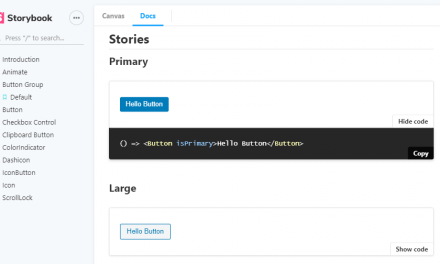Two weeks ago, Matt Mullenweg made some pointed remarks in an article from The New Stack, calling Jamstack “a regression for the vast majority of the people adopting it.” In preparation for an upcoming article that will include comments from leaders across both the WordPress and Jamstack communities, I asked Mullenweg if he stands by his remarks characterizing Jamstack as a regression. His response was lengthy and is printed here in its entirety to preserve cohesion.
Q: Do you stand by your remarks that Jamstack is a regression for the vast majority of the people adopting it?
Answer:
“Vast majority of people adopting it” was probably too harsh, because there aren’t a vast number of people adopting Jamstack in the first place, and those who do are probably fully aware of the tradeoffs. There are some good reasons, for certain situations, to decouple and add complexity to your architecture, and WordPress’ REST API works fantastically as a backend there. But I worry they are over-selling the promise of what’s really an architectural decision. If you look at the benefits they purport, it’s better performance, security, scaling, and developer experience:

Better Performance: You can achieve the same performance by putting a great CDN like Cloudflare on top of WordPress, and your life will be infinitely easier when you want to add dynamic features like a store or comments. You can also easily find a static WordPress host like Strattic or Shifter.
Higher security: I don’t believe that introducing a number of proprietary and sub-scale SaaS services like Netlify into your stack will make your site more secure. I believe the most secure thing you can do is run fully open source code, as widely vetted and used as possible, on servers you control, or from the fewest number of vendors possible. WordPress securely runs some of the most attacked websites on the internet, including major media, Facebook, and WhiteHouse.gov. Having this many moving parts doesn’t inspire confidence:

Cheaper, easier scaling: CDNs are more expensive than normal hosting accounts, and you can get WordPress running on a decent host for less than $5/mo. And there are even more powerful offerings: The personal plan on WP.com can serve tens of millions of visitors per day, to the website or the headless API, includes a global CDN, and a domain name for $4/mo, and we still have a profit margin. GraphCMS starts at $29/mo and only gives you “5,000 entities,” whatever that means. Contentstack is $3,500/mo. And that’s just for the headless CMS part! You still need to sign up and pay for a bunch of the other stuff in that graphic before you have a website a human can visit in a browser.
Better developer experience: If your developer wants to copy and paste updates from marketing to the website, sure, but if they want people to be able to update the website without their help, they should go with something easier for users like WordPress. If you’re curious about the developer experience, or an investor thinking about this space, I really suggest you watch this three hour and thirty minute tutorial to really understand what is being sold under the premise of “better”:
Have I ever built stuff like that? Totally! It can be a ton of fun, like building a rocket at home or fixing up an old car. I’ve seen some awesome sites built on decoupled architectures or static publishing, using headless WordPress rather than the CMS’s above, but still a similar idea. People are trying to paint me as being against Jamstack, but that is as foreign to me as being against duct tape — it’s good for some things, bad for others, and it’s not going away. I just wish they would be more intellectually rigorous and honest when marketing it. I expect a Jamstack-like approach to exist forever, just like the ideas behind Jamstack pre-date it getting jammed down our throats by Netlify’s marketing team.
Biilmann has got the Ballmer / iPhone story backwards — Microsoft’s mistake there was they made something too complicated, and the iPhone simplified it. Jamstack introduces numerous vendors, build steps, network calls, interfaces, even billing relationships for something that’s a single button press in WordPress.
The reason services like WordPress.com and Shopify are growing so much is they are taking things that were complicated and making them simpler and accessible to a much wider audience. My mission is to democratize publishing and commerce, to make it radically accessible to everyone regardless of technical or economic ability, and increase the freedom and openness on the internet. As I said on Twitter, the first 15 years of WordPress were just the first few chapters. I’m looking forward to building and rebuilding the platform the rest of my lifetime, and when that comes to an end I hope future generations will carry the torch.











